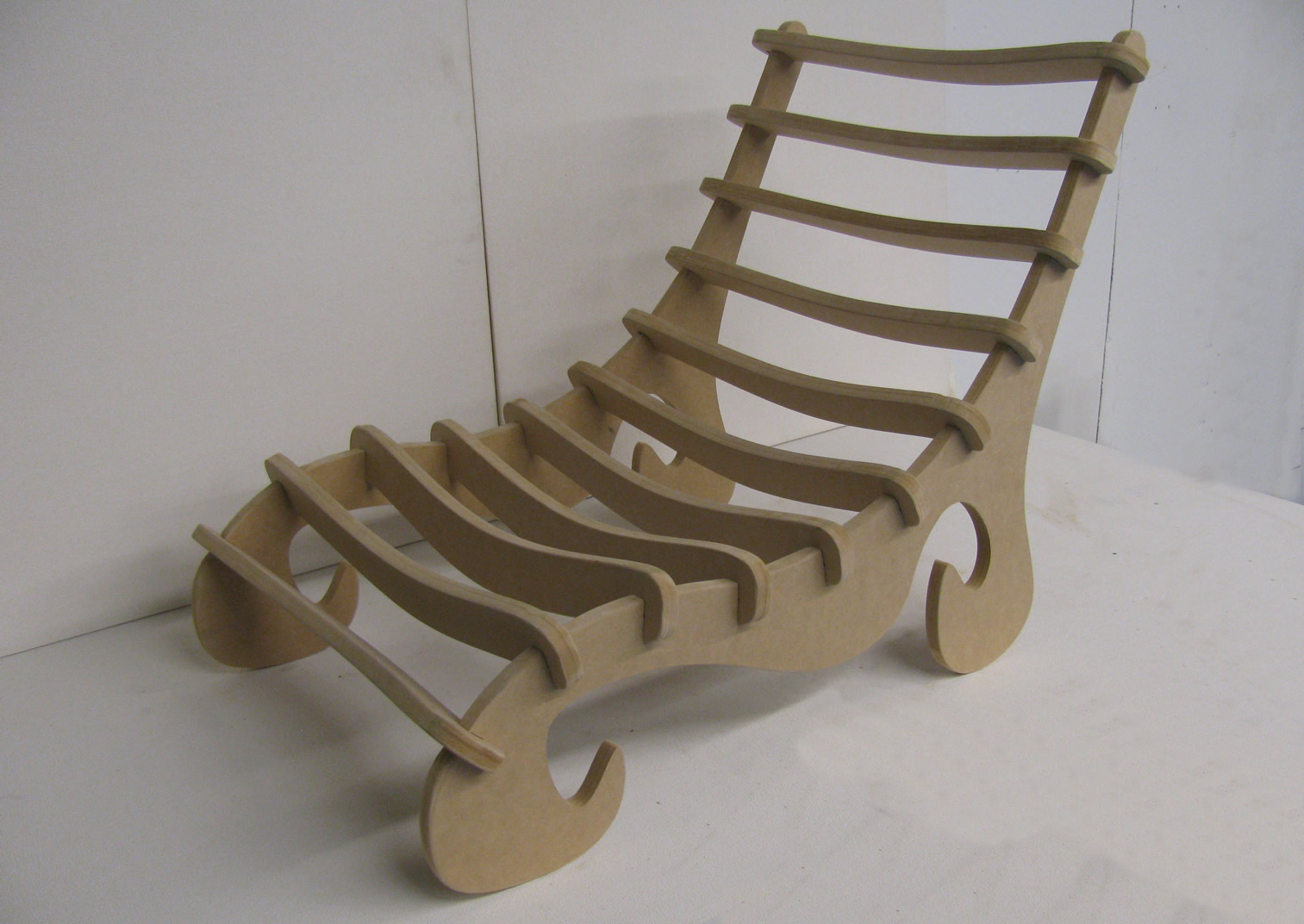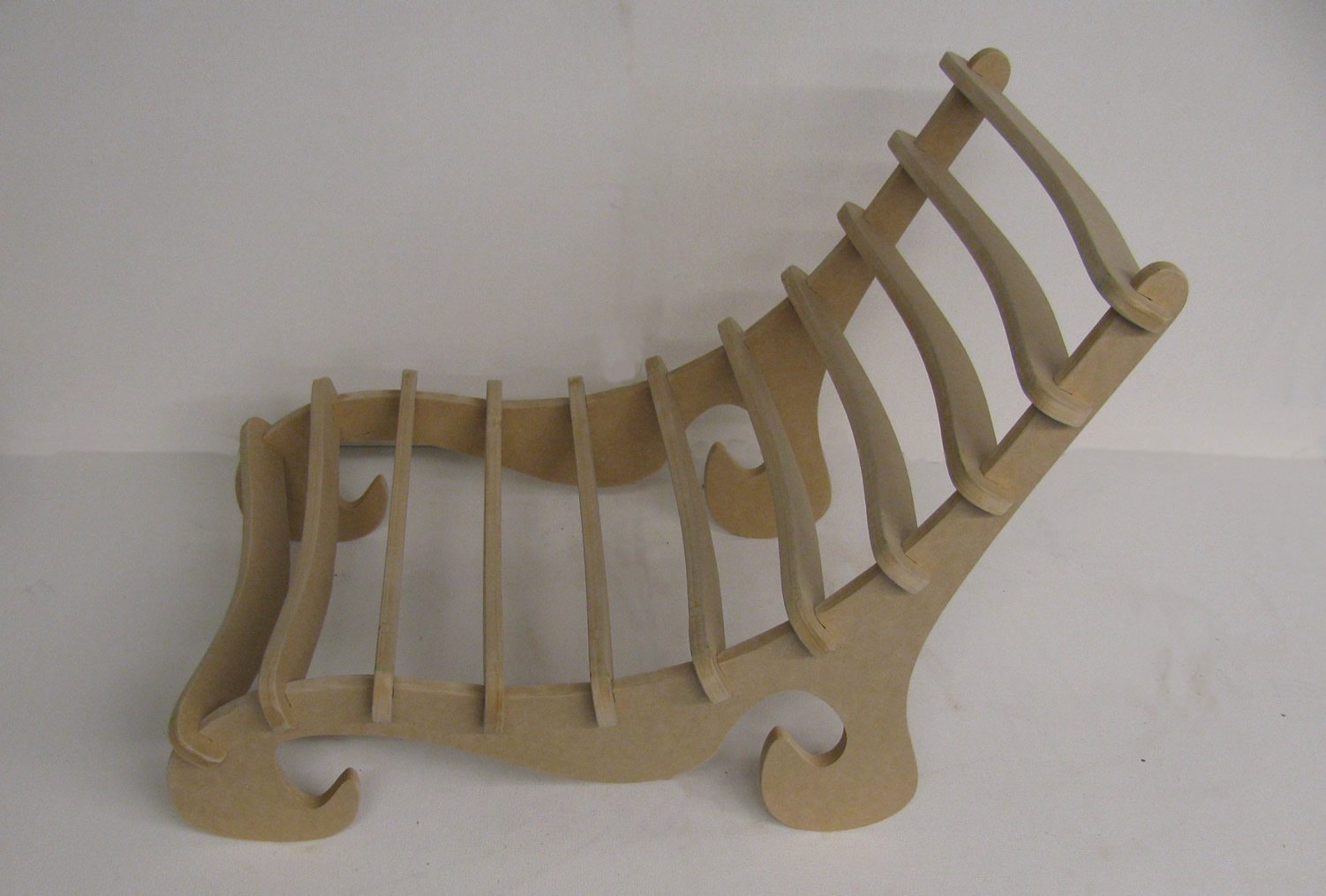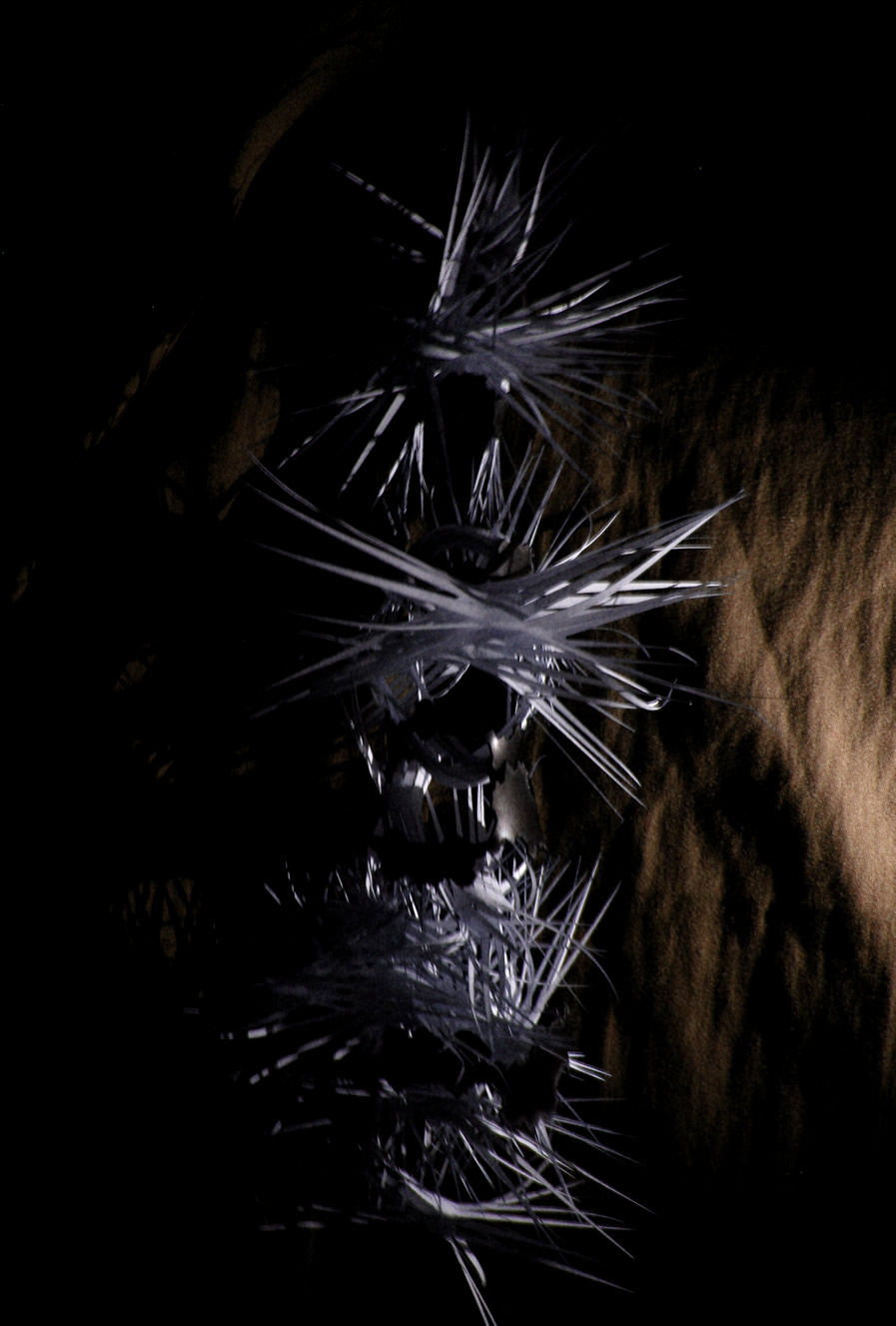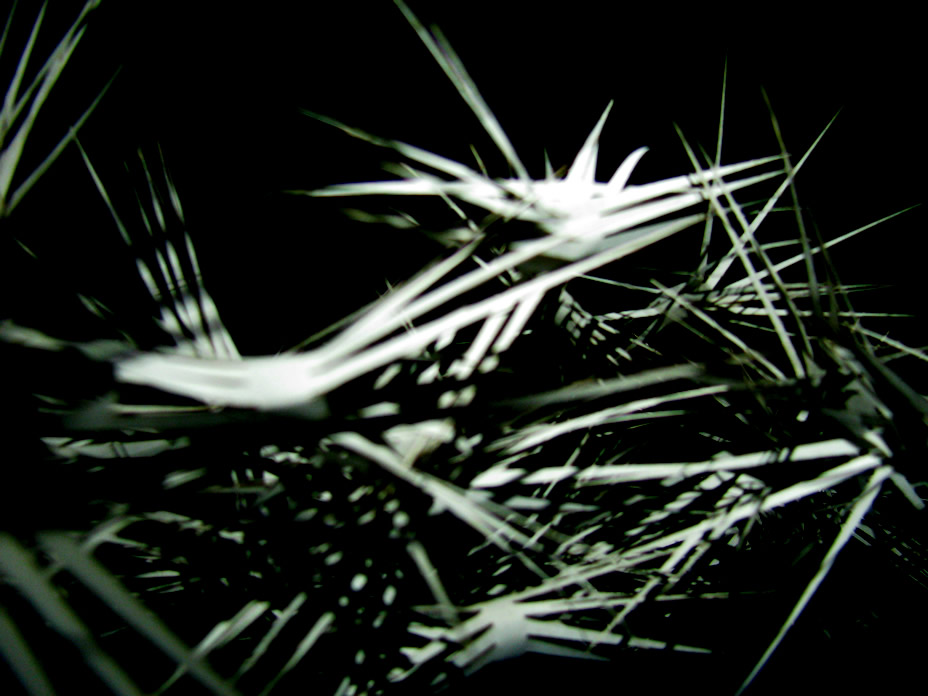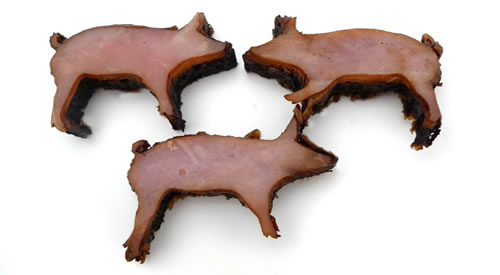Chairs/Conversation Part 2 by Zach Rispoli (2013)
After testing the prototype, I’ve made these changes to the rhino file:
– More room for neck/head
– Removed circular cut from bottom
– Made the curve more swirled
– Added an extra panel (more concentrated: more comfortable)
– Tightened the join places for stability
– Added swirled engravings to the sides
– Thickened the back of the chair for strength so you can lean back
The final chair will be built with plywood and spray painted gold.
Laser Cutter Example: “Attempt at modular Laser cut MDF terrain” by daviddasilva (2013)
“Been working on this project for the past few months and so far the feedback at our LGS has been encouraging. hoping to launch a kickstarter in the next few days and looking for some feedback before continuing
the walls come in 1,2,3,4,5,6,7 and 8 inch sections, all walls are double sided, the floors come in several sizes and they are made so the buildings/structures can be put together and taken apart in minutes and stored in a small box ( I should be able to fill an entire table with a shoe box’es worth). we are burning more prototypes this week and should have more pictures by the end of the week.”
– daviddasilva
Laser Cutter Example: “Foldable Fractal 2.0” by Sanch (2010)
Foldable Fractal is a project originaly created during the Generator.x 2.0: ‘Beyond The Screen’ workshop run by Marius Watz, in Berlin in 2007. The piece was generated using a recursive algorythm based on Lindermayer system . The software vvvv was used to generate the cutting path. The piece is based on a recursion of a pentagon shape formed after folding a pentagonal dodecahedron . The piece was created using the laser to score the material to enqble folding, thus simplifying and accelerating the process of fabrication.
Laser Cutter Example: “Laser cut last supper menu” by Jan Habraken and Alissia Melka Teichroew (2010)
When asked to come up with an idea of a product to test under the laser cutter at NYDesigns by Design Glut. Jan Habraken & Alissia Melka-Teichroew decided that they had cut pretty much every material but food. This is where the hunt started, what foods can we cut or etch and also create something fun and something that would be too complicated to do manually (why else would you laser cut!). We decided sandwiches, pancakes, chocolate bars, sugar glass, tuna (can you imagine the seared edge the laser could make!). There was only time to etch some pancakes and cut some piggy “ham & cheese” sandwiches.



